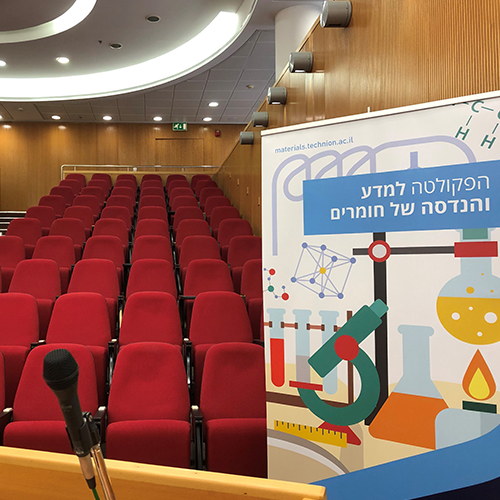
Mr. Jonathan Zimmerman - Ph.D. Candidate
19/12/2024
אודיטוריום ע"ש דויד וואנג, בניין מידן, קומה 3
14:30
Recovery, recrystallization, and grain growth represent the primary methods used to manipulate the microstructure and properties of bulk metals. During recrystallization new, defect-free grains nucleate within a plastically deformed material. These grains grow, consuming the deformed microstructure and altering the material's overall crystallographic orientation, defect content, and grain size. These microstructural changes significantly influence the material's mechanical, electrical, magnetic, and other properties. Metallic nanoparticles could greatly benefit from the tunability provided by recrystallization, yet to the best of our knowledge no reports on using recrystallization in fabrication and processing of metal nanoparticles are available in the literature. In our research we applied deformation and anneal to metallic nanoparticles to induce recrystallization, and observed a wide range of outcomes: Some particles morphed into highly exotic shapes, while others broke apart entirely during the process. We also found that the high surface to volume ratio inherent to nanoparticles is of crucial importance to their recrystallization behavior. The interaction of dislocations with the particle surfaces reduces the likelihood of recrystallization as the particle size decreases, resulting in a critical size below which recrystallization cannot occur. We developed a simple kinetic model linking the size effect on nanoparticle recrystallization to various material parameters such as the energy and mobility of grain boundaries.


